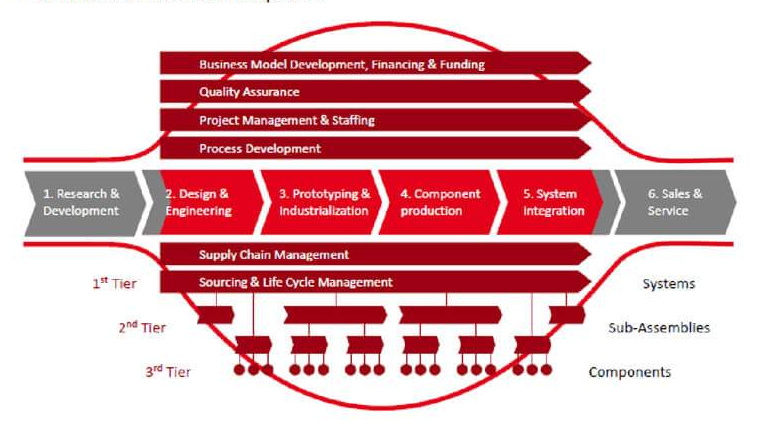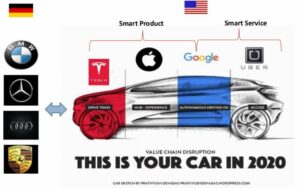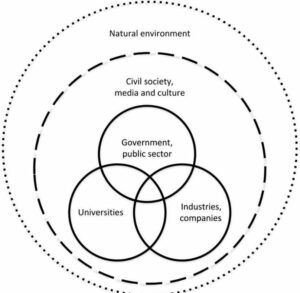Open innovation with whom?
Open innovation in different contexts
ALLIANCES
Traditionally – and particularly in the Anglo-Saxon culture – cooperation between companies is mainly organized through (strategic) alliances and joint ventures. The (R&D) cooperation is thereby arranged through formal agreements and legal contacts. In the case of a joint venture, there is even a new legal entity with a shared involvement of the initiators.

CHAIN
Cooperation in industrial chains (formerly referred to as “the supply chain” and therefore also as “vertical cooperation”) means that suppliers and customers/clients work together. From the 1980s onwards, the emphasis was mainly on cooperation in operations and logistics (“supply chain management”). Later, more and more attention was paid to cooperation in product development and life cycle management. The Brainport Eindhoven region is a good example of how chain cooperation has grown over the years into a complex chain of relationships.


NETWORK
‘Partnerships’ in networks exceed normal suppliers and client relationships in the same chain. More and more, (technical) expertise and experiences from other industries or sectors can be helpful in innovation outside one’s own industry. For example, applications that are commonplace in the automotive industry (such as flex-foils or printed electronics) can also be applied in other fields (such as medical appliances). In that case, there is ‘horizontal cooperation’ (between different ‘chain collaborations’) in addition to the vertical variant (see previous tab). The car of the future will be a collaboration between horizontal and vertical networks. This development has already partly started with companies like Tesla and Lightyear. Also in the example of Brainport Eindhoven (see previous tab, last figure) there is actually already cooperation in an industrial network.

ECOSYSTEM
The development outlined in the previous tabs – of innovation within one’s own company through (1) formal partnerships, (2) cooperation in the industrial chain and (3) cooperation across chains – is further extended into ‘innovation ecosystems’. Various regions – such as the Brainport Eindhoven region – are focusing on social problems and solutions for the ‘Sustainable Development Goals’ (SDGs). New products and services should not only be valuable for the (end) user, but are also assessed on their social and societal impact and ‘ecological footprint’. Shared values” (Porter) play an important role here. In order to innovate sustainably, not only companies but also other stakeholders within a region must work together: companies, universities, governments (triple helix), citizens (quadruple helix) and ‘planet’ representatives (quintible helix).

The various “helixes” are visualized in the figure below (Carayannis-Campbell, 2010).
